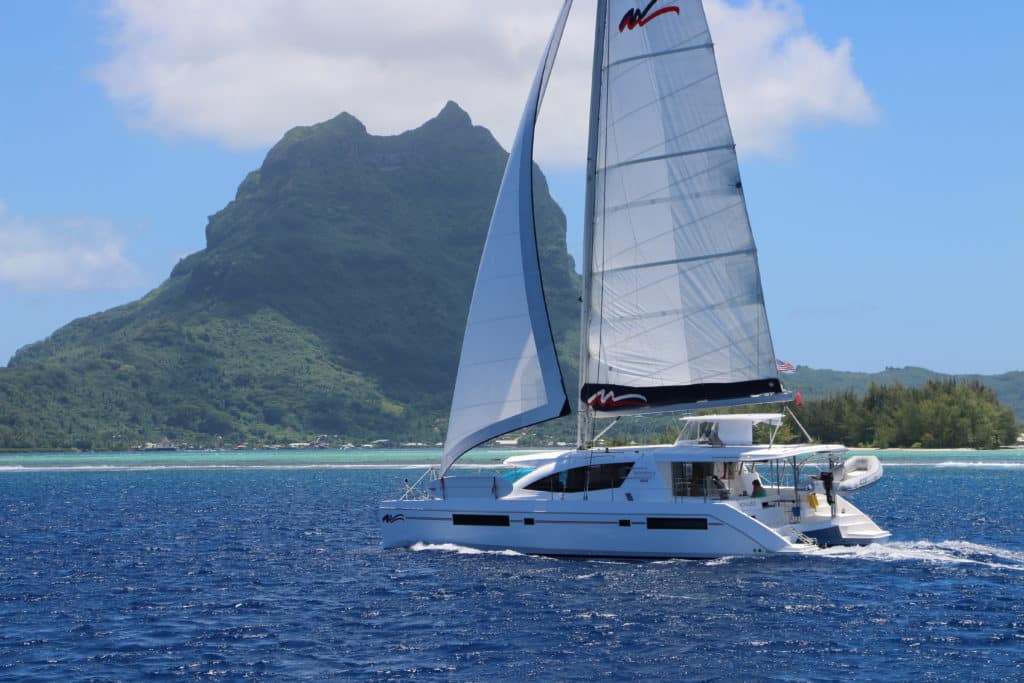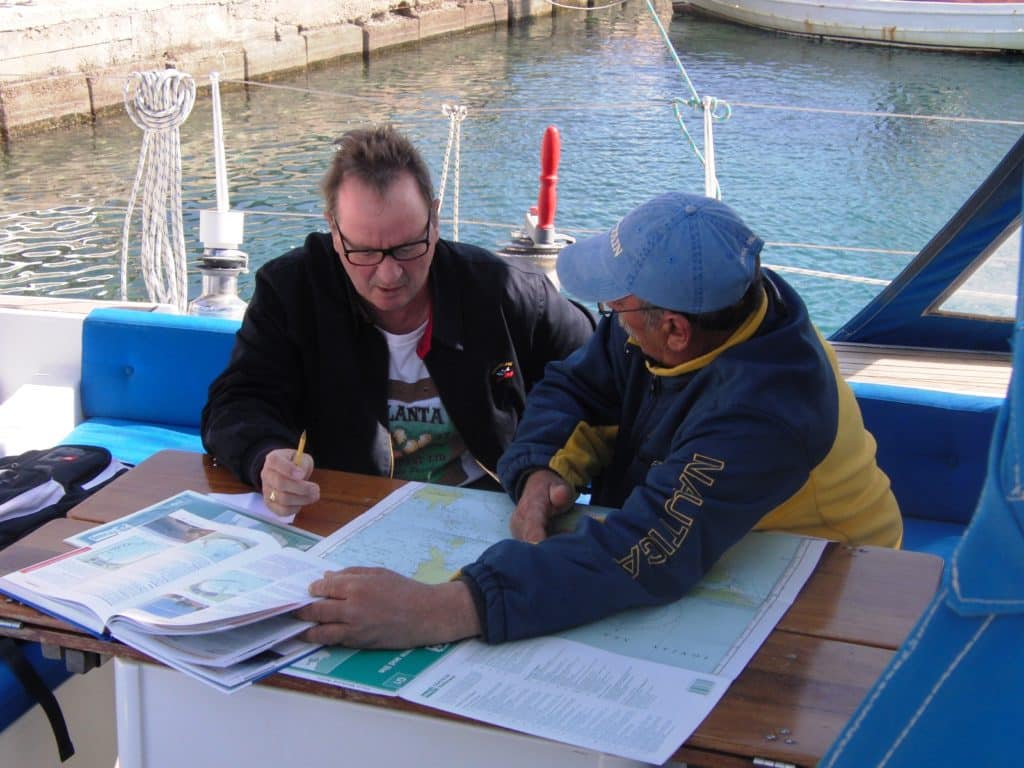
A sailing vacation! For most of us, it’s an event that might happen only once a year, if that. Once a charter is booked, even though it may be months away, the anticipation begins. Part of the fun is in planning the trip — specifically, where you’ll go and what you’ll see. It’s easy to get so caught up in the excitement that you build expectations that aren’t realistic, which can sometimes lead to disappointment. These proven itinerary-planning tips will help you avoid some common pitfalls.
The most important strategy for outlining a successful sailing itinerary is this: Don’t over-plan! Bear in mind that an itinerary is the proposed outline of a journey — so don’t cast it in stone. Keep your expectations reasonable. Make a rough list of islands, ports or anchorages you’d like to visit rather than places you think you must. On any sailing charter, wind and weather can trump even the best-laid plans, which is why most sample itineraries from charter companies bear a variation of this disclaimer: “All itineraries subject to wind and weather conditions.” Start by making a wish list, and then, keep it flexible. After you arrive at your vacation destination, Mother Nature may have other plans, so be willing to adjust yours accordingly.
Researching your destination(s) in advance is part of every sailing vacation, and certainly if you’ll be the skipper, it’s prudent to learn as much as you can about your prospective sailing area. If you’ll be along as crew or guest, by all means, do some reading, but keep in mind that, for you, there also will be lots of leisure time aboard the boat to read about places once you’re actually there. If you want to immerse yourself (or, as captain or first mate, feel you should), start by buying at least a large-scale nautical chart and cruising guides or pilot books to the areas in which you’ll be sailing. Pay particular attention to the area’s prevailing winds, seasonal and local weather patterns (including anomalies), navigational hazards and — very important! — the distances between ports or anchorages. Don’t rely on mainstream travel guides to form ideas about where to go and what to see; most offer glowing descriptions of places that may not be accessible by sailboat, and guidebook maps (and mile scales) are often incomplete or misleading. Always keep in mind the actual distances between ports and islands, not only in terms of nautical miles, but in terms of the time it will take to sail from point A to point B at your boat’s average cruising speed — under sail and power. Also keep in mind the number of full days you have to sail, and when you must be back within easy range of the charter base as the vacation draws to a close.
Advertisement

In the planning stages, almost everyone in the crew has a bucket list. Whittle yours down — most are overly ambitious. For example, instead of making a wish list of ports and islands in an entire region, focus on one smaller coastal area or island group: the British Virgin Islands or St. Vincent and the Grenadines in the Caribbean, for example, or the Eastern Cyclades, Western Cyclades or Saronic Islands in Greece. Even with a pared-back list, you likely won’t be able to see everything there is to see on a typical weeklong charter, so once you choose an area and have read a bit about it, tweak that bucket list further. If you want, make two wish-list outlines; base them on prevailing wind and weather patterns. If itinerary A isn’t feasible during the week(s) you’re there, itinerary B might be. You might even find that the weather allows you to do a little bit of both.
By all means, rely on the expertise of your charter company representatives in helping plan your trip and your proposed itinerary. Most companies issue pre-written “suggested” itineraries in advance of your charter; these are built upon years of solid sailing experience in each area and more local knowledge than you as a visiting skipper and crew could ever hope to have. The charter company knows what’s realistic to plan in any given time frame; it knows the capabilities of its yachts, and it also knows which areas should be avoided due to navigational or other hazards. Pay rapt attention to the full pre-charter briefing about weather forecasts, navigation and suggested routes based on the wind and weather that week. Heed the company’s advice on what to do — and more important, what not to do. Once aboard, the crew should never argue with a destination decision made by the captain, since it’s likely based on safety or other concerns.
Once you arrive in paradise, remember this: You are on vacation; you are not coordinating a work-related team event. Ditch the daily planner. Let the good times roll as they may. Soak up the sun, the sailing and the local sights and sounds. Relax. Don’t become so focused on crossing places off your bucket list — or on where you’ll point your bow tomorrow — that you forget to enjoy where you are right now. Appreciate moments that can never be planned in advance: dolphins leaping in the bow wake, a bird perched on the stern rail, a perfect sunset over a gleaming blue sea or an unexpectedly pristine cove that wind conditions make a perfect place to drop the hook. Above all else, remember: Vacation itineraries shouldn’t be a rush to beat the clock, you’re off it!
Advertisement
– – –
CW contributing editor Lynda Morris Childress and her husband, Kostas Ghiokas, sail as a team on crewed charters aboard their Atlantic 70 cutter, Stressbuster, in the Greek islands. They have worked to design charter itineraries for their clients for the past 14 years.








